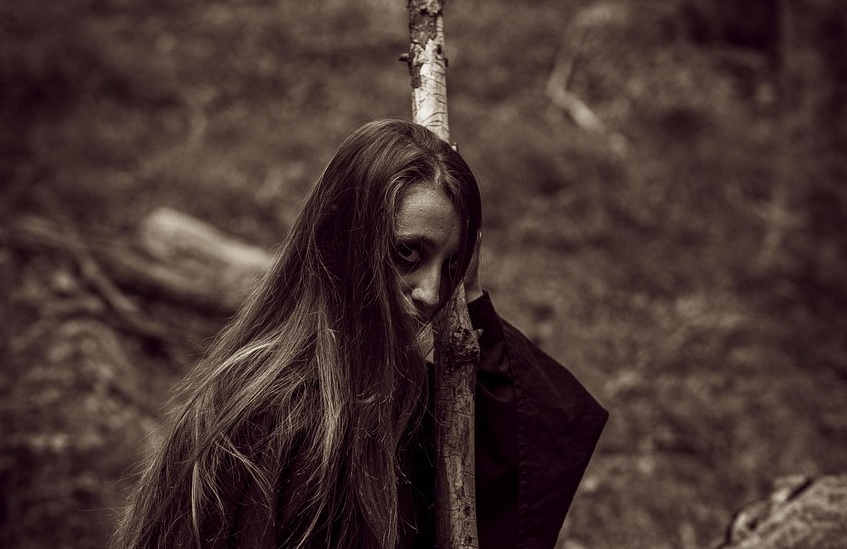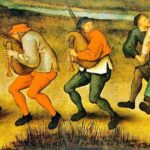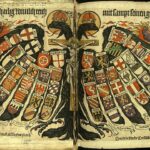
Imagine a time when a suspicious glance or a failed harvest could land you on trial for witchcraft—complete with pitchfork-wielding neighbors and a one-way ticket to the stake. Welcome to The German Witch Hunts: A Dark Chapter of European History. Between the 15th and 18th centuries, Germany became the epicenter of a witch-hunting frenzy that claimed thousands of lives, fueled by fear, superstition, and a dash of medieval misogyny. In this article, we’ll unravel the chilling history, cultural quirks, and lasting echoes of these trials. Whether you’re a history buff, a curious traveler, or just here for the grim tales, buckle up for a wild ride through Germany’s shadowy past.
The German Witch Hunts weren’t just a blip on the historical radar—they were a full-blown cultural catastrophe. Spanning roughly from 1450 to 1750, these purges saw an estimated 20,000–25,000 executions across the Holy Roman Empire (modern-day Germany and beyond), outpacing any other region in Europe. Why Germany? Blame a perfect storm of religious upheaval, economic instability, and the infamous Malleus Maleficarum—a 1486 witch-hunting manual that turned paranoia into a profession. From rural villages to bustling towns, accusations flew like Oktoberfest beer mugs, targeting mostly women deemed too outspoken, too old, or just too unlucky. This dark saga isn’t just a footnote; it’s a window into the psyche of a nation wrestling with fear and faith.
The Witch Hunts Unpacked: Key Moments and Madness
The Spark That Lit the Fire
The witch hunts kicked off in earnest during the late Middle Ages, with Germany’s fractured political landscape—hundreds of petty states under the Holy Roman Empire—creating a breeding ground for chaos. The Reformation added fuel, pitting Catholics against Protestants in a blame game where “witches” became convenient scapegoats. Ever heard of the Thirty Years’ War? It wasn’t just about religion; it supercharged witch hysteria as communities crumbled.
Bamberg and Würzburg: Witch-Hunting Hotspots
If there were a witch-hunt Hall of Fame, Bamberg and Würzburg would be MVPs. Between 1626 and 1631, the Bamberg Witch Trials executed over 1,000 people—men, women, even mayors—under the ruthless Bishop Johann Georg II Fuchs von Dornheim. Würzburg wasn’t far behind, torching 900 in a single decade. These weren’t isolated incidents; they were state-sponsored purges. Visiting today? Check out Bamberg’s eerie history on a broader German History Timeline.
The Role of the Malleus Maleficarum

Enter the Malleus Maleficarum, or “Hammer of Witches”— a DIY guide to spotting, torturing, and executing witches. Written by Heinrich Kramer, this 1486 bestseller (thanks, Gutenberg!) convinced magistrates that witches were real, dangerous, and probably your neighbor. It’s the ultimate example of fake news gone medieval, and Germany ate it up.
Why Women Bore the Brunt
Over 80% of victims were women—widows, midwives, or anyone who didn’t fit the patriarchal mold. A healer with herbs? Witch. A woman who argued back? Double witch. This wasn’t random; it was systemic. The hunts reflected deep-seated anxieties about female power in a male-dominated world. For more on gender in German history, see Famous Germans.
Real-Life Tales and Twisted Truths
Take Anna Maria Schwegelin, one of Germany’s last “witches,” sentenced to death in 1775 but spared at the eleventh hour—proof the madness eventually waned. Or consider the Pappenheimer family, gruesomely executed in 1600 Munich after a sham trial involving torture and forced confessions. These stories aren’t just macabre trivia; they reveal a society gripped by fear yet morbidly theatrical about it. Fun fact: some towns still host “witch tours” today—less burning, more bratwurst. Planning a trip? Pair it with Oktoberfest Traditions and History for a lighter vibe.
And here’s a kicker: witch hunts weren’t cheap. Trials cost a fortune, often funded by confiscating victims’ property—making it a profitable racket for local lords. Greed, not just superstition, kept the fires burning.
Conclusion
The German Witch Hunts: A Dark Chapter of European History expose a time when fear trumped reason, and Germany paid the price in blood and bonfires. From the Malleus Maleficarum to Bamberg’s brutal legacy, this era shaped a nation’s cultural DNA, leaving lessons in skepticism and resilience. Ready to dig deeper? Explore German Christmas Traditions for a cheerier slice of heritage, or unravel more history with Fasching – Carnival in Germany. Curious about Germany’s wild past? Browse our treasure trove of articles to fuel your fascination!
Want to Learn More About German History?
Explore related articles to dive deeper into German traditions and historical events:







